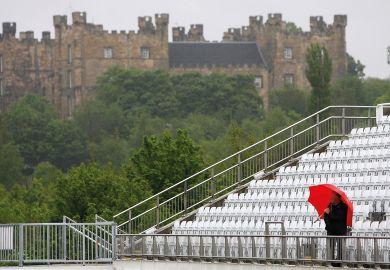English universities have been urged to set targets for enrolling more white, working class students after new research revealed that fewer than one in five do currently.
A report from the National Education Opportunities Network, published on 14 February, says that white students from lower participation neighbourhoods account for fewer than one in 10 students at more than 70 per cent of English universities.
This has been attributed in part to the relatively poor achievement of this group at school, but disadvantaged white students are also more likely to enrol at providers close to where they live.
Most poorer white students (more than 70 per cent) attend post-92 universities – and large numbers also follow higher education courses in further education colleges.
The government urged English universities to prioritise enrolling more white working class boys in 2016, but the Neon report says that fewer than 20 per cent of institutions have set targets in their access and participation plans relating to white students from poorer neighbourhoods.
The report recommends that such targets “may be essential to initiate significant progress”, stating that, if all higher education institutions reached a minimum of 5 per cent of their students being white and from low participation backgrounds, nearly 10,000 more students from this group would win places.
“We’re looking for an outcome-based approach and if this issue is going to be a priority, targets are the best way forward,” said Graeme Atherton, Neon’s director.
The report says that most higher education providers are not targeting outreach work specifically at poorer white students, with more than 70 per cent of institutions that responded to a Neon survey saying that they are trying to ensure that existing projects reach students from these backgrounds. However, the number of institutions focusing activity on this issue has increased since Neon’s last report on the subject, in 2016.
Dr Atherton added: “I would like to see approaches sustained over time, in partnership with schools. The current emphasis on engaging this group through sport does work, but I’d also like to see more emphasis from the creative areas.”
The report’s other recommendations include the creation of a national network to drive up the attainment of underprivileged white students. It says that universities should focus their outreach activities equally on men and women, despite participation amongst white working class males continuing to be lower than their female counterparts.
Register to continue
Why register?
- Registration is free and only takes a moment
- Once registered, you can read 3 articles a month
- Sign up for our newsletter
Subscribe
Or subscribe for unlimited access to:
- Unlimited access to news, views, insights & reviews
- Digital editions
- Digital access to THE’s university and college rankings analysis
Already registered or a current subscriber? Login








